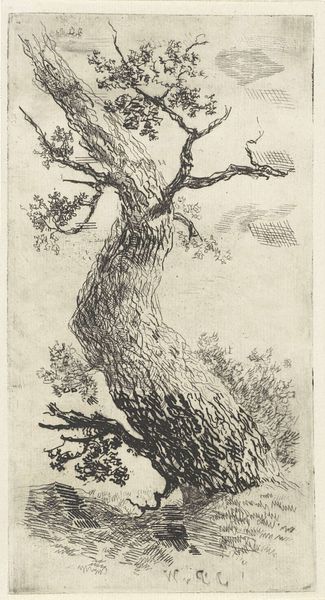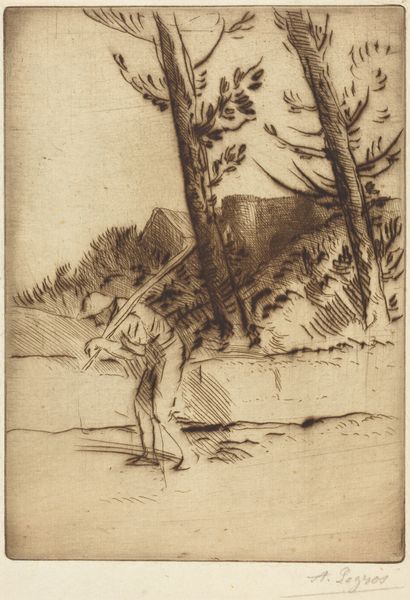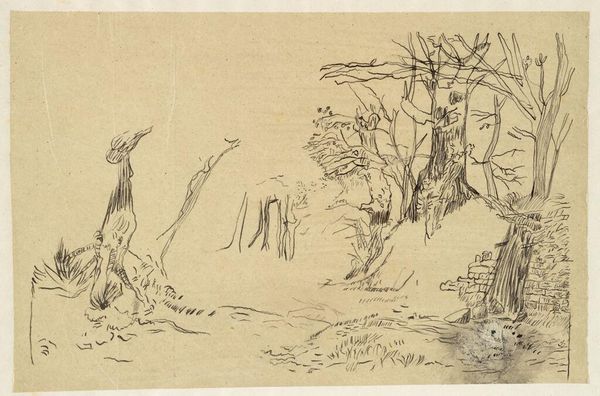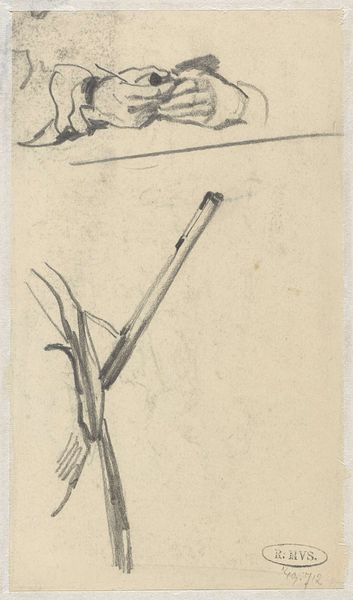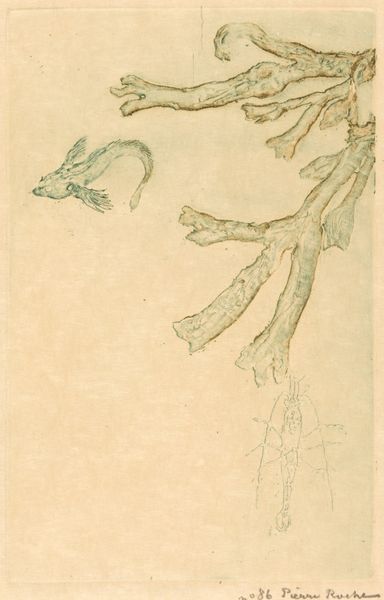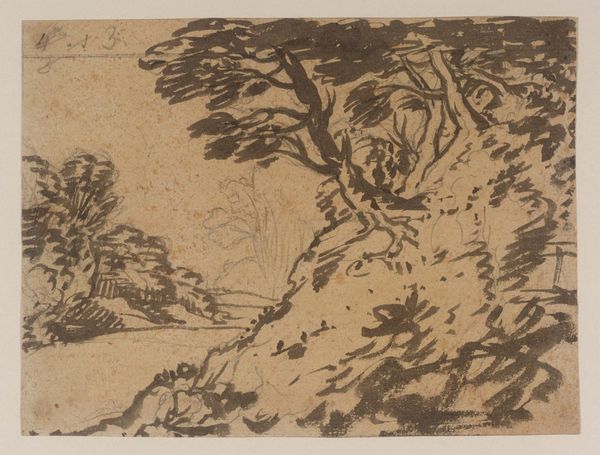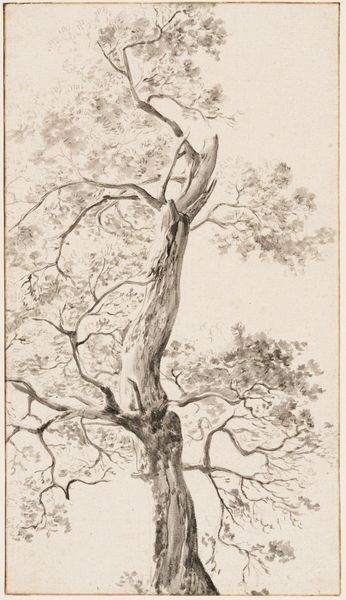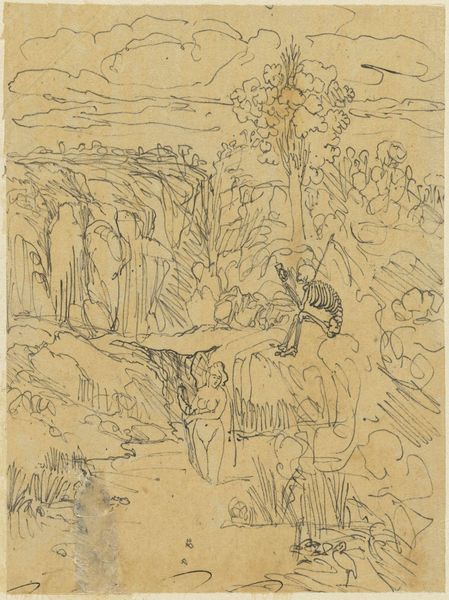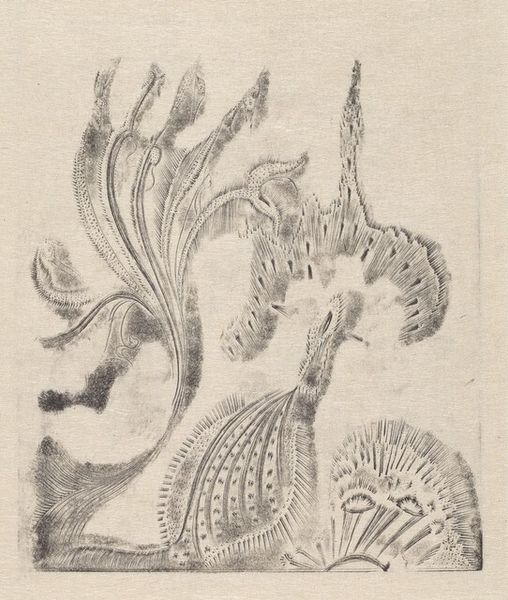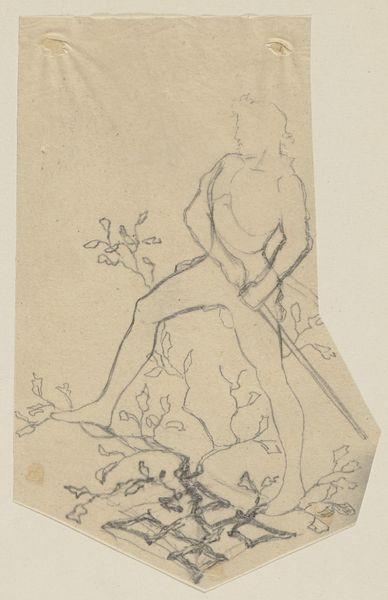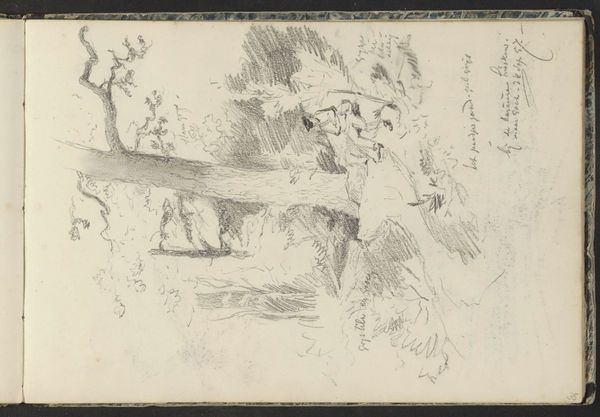
drawing, ink, pencil, pen
#
drawing
#
ink drawing
#
pen sketch
#
pencil sketch
#
landscape
#
ink
#
pencil
#
sketchbook drawing
#
pen
Copyright: No Copyright - United States
Curator: Here we have Wanda Gág’s 1924 landscape drawing, “Chidlow,” currently held at the Minneapolis Institute of Art. The work primarily employs ink and pencil on paper. What strikes you first about it? Editor: A stark stillness. The composition, all browns and grays, and the bare trees evokes a late autumn or early winter scene. It feels muted, almost melancholy. Curator: Gág’s work often embodies that feeling. She explored themes of social isolation and the struggle for the artist’s place within modern society. We must recall the economic hardships she experienced. Editor: True. Considering the time, the drawing possibly responds to social changes during the interwar period. There's a palpable sense of a community stripped bare by circumstance and forced change. It's quite suggestive despite its apparent simplicity. Curator: Exactly. These images can serve as a form of protest, expressing personal struggle and, more broadly, economic anxiety or a commentary on the rapid transformations and societal shifts that can disrupt lives and communal existence. Editor: There’s also an interesting tension between the realistic representation of the trees and the almost dreamlike quality created by the soft, hazy background. Does the historical record reveal the intended effect? Curator: Historical records do not tell us precisely of her conscious intentions. Yet the contrast encourages speculation. Her other artworks display many of the same stylistic signatures, particularly in the era. Editor: That adds another layer to my interpretation: she may deliberately invoke those moods in line with broader contemporary trends, to critique norms about landscape. Or even, by extension, feminine passivity in that landscape. Curator: Yes. She encourages viewers to look beyond the mere image and instead reflect on their own connection to the wider society. Editor: It offers such rich grounds for interpretation, both historically and in the current context. I now see its lasting power more clearly. Curator: Agreed. By analyzing "Chidlow", we can gain insight not only into Gág’s life and artistic choices but also the wider discourse around artistic practice.
Comments
minneapolisinstituteofart almost 2 years ago
⋮
Wanda Gág declared that no person or thing sent her into ecstasy like this old apple tree. Starting in 1923 she fled New York City for the countryside a good part of every year, and this tree was at a house she rented in Connecticut. She drew it obsessively, struck by the vitality of its smooth, dead branches. In some drawings, like this one on sandpaper, the tree turned sinister and its branches, she said, became claws.
Join the conversation
Join millions of artists and users on Artera today and experience the ultimate creative platform.
